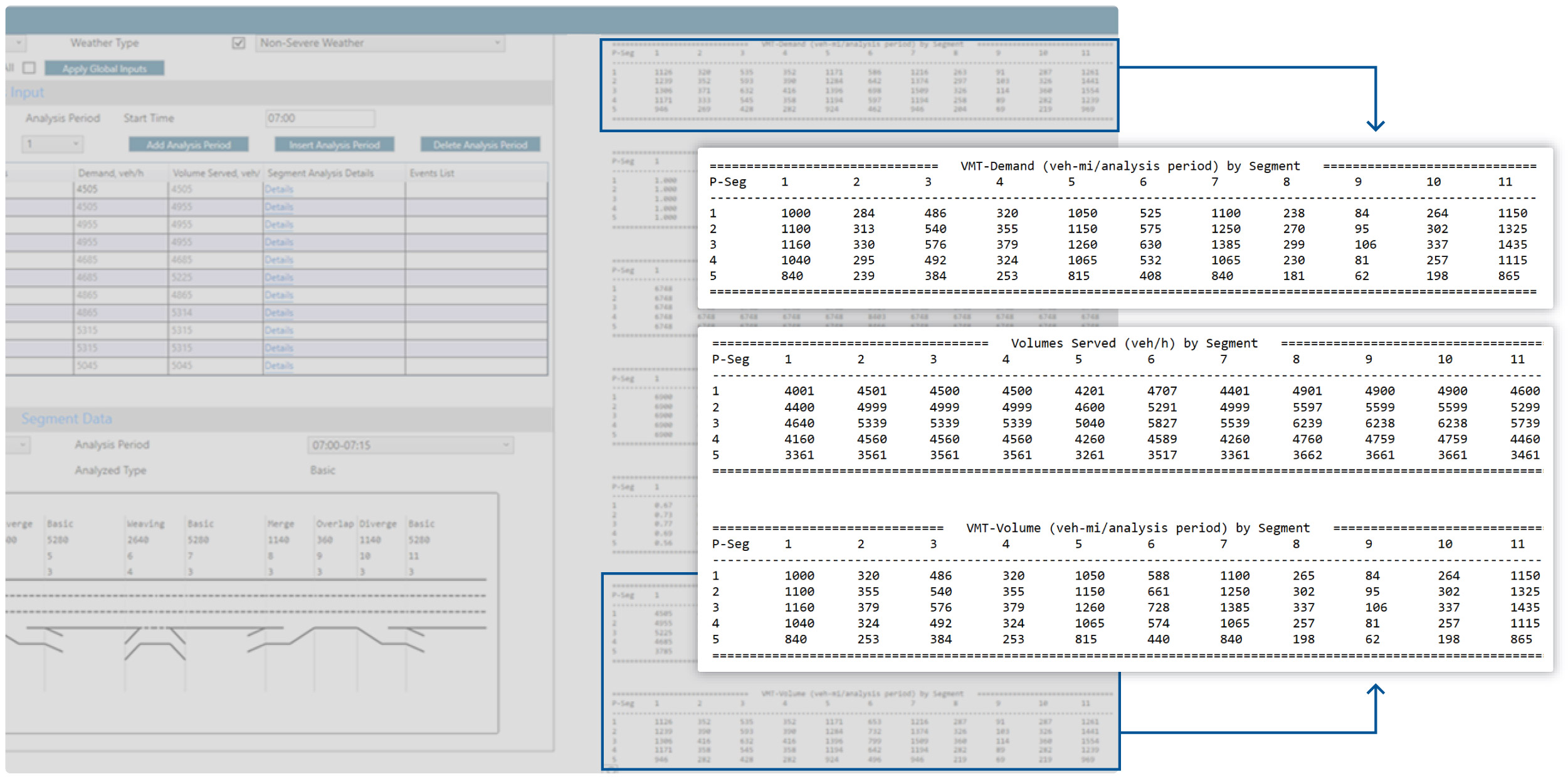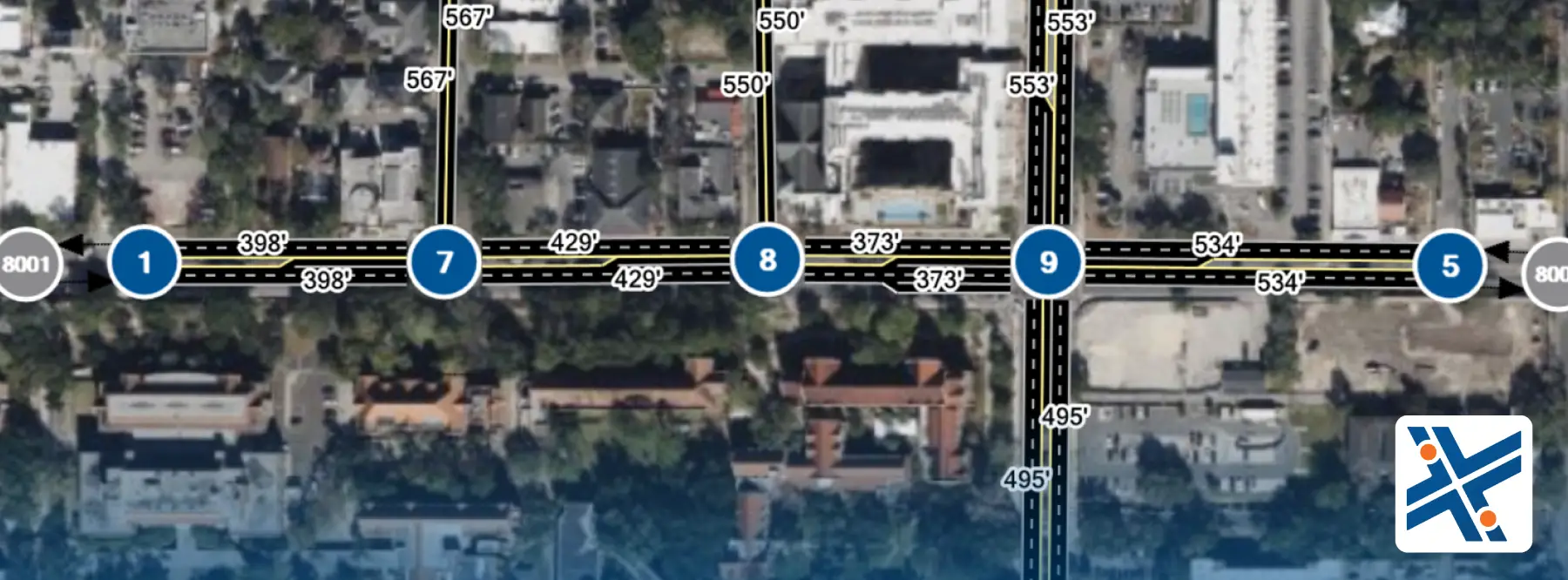California Senate Bill 743 was passed by the legislature and signed into law by the Governor in the fall of 2013. Read more here. This legislation was conceived to adjust to new policies under the California Environmental Quality Act (CEQA) to promote “the reduction of greenhouse gas emissions, the development of multimodal transportation networks and a diversity of land uses.”
To support the goals of the SB 743 legislation, officially required since July 1, 2020, an alternative metric from the traditional delay was needed. The Vehicle Miles Traveled (VMT) was recommended by the Governor’s Office of Planning and Research (OPR) and is the performance measure specified in the revised CEQA Guidelines.
Vehicle Miles Traveled (VMT) is calculated as the sum of the distance traveled (in miles) by each vehicle on a facility during the analysis period. It is used extensively in transportation planning directly as a measure of effectiveness, as the main input for gas emissions, noise, fuel consumption, and vehicle operating cost estimation models. It is also the preferred exposure metric for road safety analysis, including those of the Highway Safety Manual (HSM).
Although Caltrans is using VMT as the performance measure for transportation impacts based on the implementation of SB 743, traffic operational analysis with LOS and delay are still needed to provide input to decisions related to the effectiveness of operation management strategies, planning, and design, including but not limited to elements such as highway and freeway facility geometry, intersection lane configuration, signal warrants and signal timing and coordination.

To support a combined LOS and VMT analysis, HCS has implemented VMT and related measures in several modules. Currently, the Freeways module presents both VMT based on demand that would use the facility in each analysis period and the VMT based on volumes served, accounting for capacity constraints.


